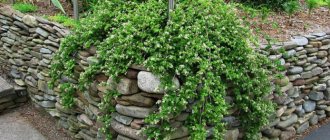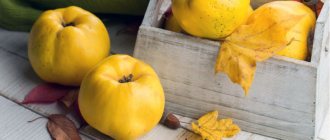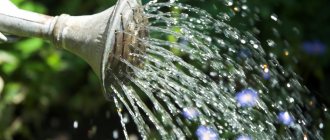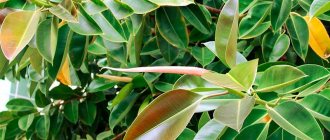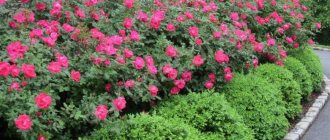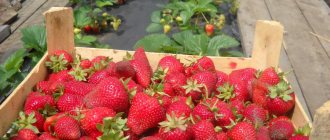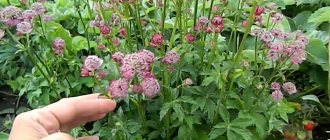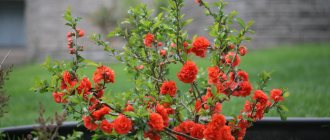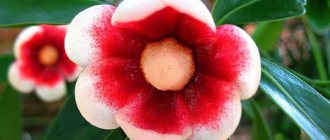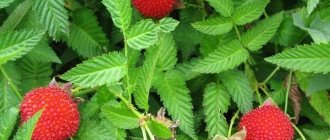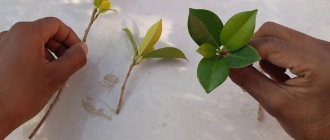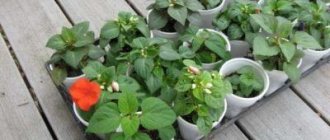Useful and harmful properties of quince
First, I’ll dwell on the benefits of quince. To make sure that it is worth growing:
- Consumption is useful for the prevention and treatment of anemia.
- Decoctions from the fruit have a positive effect on the gastrointestinal tract and help cope with diseases of the biliary tract and diarrhea. When consumed regularly, it removes cholesterol from the blood.
- Contains a large amount of vitamin C, therefore strengthens the immune system and has anti-inflammatory properties.
- The antioxidants included in the composition prevent early aging of the body and even slow down this process. Reduce the risk of strokes and heart attacks.
- Quince is also rich in pectin. It envelops the walls of the stomach and intestines, removing waste, toxins, harmful chemical compounds and toxic substances from the body. So it is recommended to use quince for poisoning.
- Helps fight excess weight. The fruit is low in calories, but at the same time saturates the body well and quickly, satisfying and suppressing the feeling of hunger.
- The pulp contains tannins. They prevent the appearance of cancer cells.
- The fruits have diuretic properties and are recommended for use for kidney problems.
- It contains a fairly large amount of iron, which helps improve blood formation in the human body.
You can learn more about the beneficial properties of quince from the video below:
With all the positive aspects that the fruit has, there are also disadvantages. The negative effects of use include the following:
- The seeds of the fruit contain toxic substances. So when they are consumed, severe poisoning of the body can occur.
- Quince pulp has strengthening properties; if consumed in excessive quantities, constipation may occur.
- When raw, the pulp can irritate the mucous membrane of the throat, causing coughing and hoarseness.
Similar beneficial properties are present in other crops. Read about the indoor olive plant, it has no less beneficial properties!
Author's note
Natalia Papanova
Blog author
Fresh quince is practically not eaten. Compotes, jams, preserves, marmalade, candied fruits, and so on are prepared from it.
When fresh, the fruit has an astringent taste.
The best quince varieties for home cultivation
Now let's move on to choosing a variety for growing at home. What can I say about this: there is a lot of choice here. And, to be honest, it was difficult for me to choose, since knowledge in this area was close to zero. Then I compiled a comparative description of the varieties that interested me. To make it easier for you, I’ll share the table that I got:
| Name | Characteristic | Pollination method | Advantages | Flaws |
| Beretsky | The tree is vigorous (reaches 2-3 m in height), the shape of the crown is wide-pyramidal. Belongs to the category of Japanese varieties. Fruit weight - up to 280 g. The first harvest appears 3 years after planting. | Self-pollinating | The skin is thin, the fruits are large. Fruits in large quantities and annually. After harvesting, the crop can remain in a suitable state for consumption for a long time. The quince does not fall off the branches. | Does not tolerate waterlogged soil. Because of this, the fruits begin to rot and crack. There is low immunity to fungal and bacterial diseases. |
| An excellent pupil | The tree is of medium height - from 1.5 to 2 m. The crown is dense and lush. The fruits are a pleasant green-yellow shade with a slight fluff. They ripen for the first time 4 years after planting. The weight of one copy is up to 300 g. | Requires artificial pollination | The tree is small in size, so it fits perfectly into the interior of the apartment (it won’t take up much space). I would even call it decorative. The fruits are large and the yield is high. There are no special care requirements. Immunity is high. | The crown is dense and requires shaping and pruning. It blooms profusely, but the ovary does not form well. Some flowers and fruits fall off. |
| Crimean early | The tree does not rise in height above 1.5 m. The shape of the crown is round. It begins to bear fruit 3 years after planting. The color of quince is yellow, the surface is smooth, without fibers. The fruiting period is 25-27 years. Moreover, the harvest ripens every year. | Self-pollinating | Tolerates climate changes and watering disturbances well. The harvest does not crack or crumble. It can even be consumed fresh: the taste is not as tart as other varieties. Easy to care for. | The fruits ripen in large quantities, but are small - up to 200 g. They do not tolerate transportation well over long distances (each fruit must be packaged separately). It often gets sick and is damaged by pests. |
| Firstborn | The size of the tree is up to 1.5 m. It begins to bear fruit 4-5 years after planting. The color of the quince itself is pale yellow. The shape is elongated and round. The surface is smooth and without a fluffy layer. The weight of one specimen is 220-250 g. The tree does not branch very much, so there will be no problems with pruning. | Self-pollinating | Artificial pollination is not required, the ovary is formed very well. Blooms and bears fruit profusely. Tolerates low temperatures well. The harvest is stored for a long time. | We have to wait a long time for the first harvest. The fruits are not very large. The pulp is juicy, elastic, but at the same time strongly astringent. So it is not suitable for fresh consumption. There are many difficulties in breeding. |
| Success | The variety is early ripening (you will collect the first harvest in 2-3 years). Tree height - up to 2 m. Fruits with slight pubescence, large (from 300 g). The shape is round. Color: yellow-green. Fruits at intervals of 1-2 years. | Requires artificial pollination | Large harvest. Although artificial pollination is required, the flowers set very well. The fruits do not fall off, the flesh is juicy and tender. Suitable for fresh consumption. | The harvest does not come every year. Often affected by a disease such as scab. Does not tolerate waterlogging and drought in the soil. The tree is light-loving, so it will not actively grow and develop in shady places. |
If you don’t want to deal with quince, then find out how to grow pineapple at home. The fruit is no less interesting and attractive.
For cultivation I took the variety “Otlichnitsa”. My harvest was like this
Features of bush transplantation
Sometimes it becomes necessary to move a plant from its “home” place. Japanese quince develops a powerful rhizome over time. Moving an adult plant will be successful only if the root system is completely intact, but this is quite difficult to do. The beginning or middle of September is suitable for replanting work, so that the bush has time to take root before the onset of cold weather.
Important! Chaenomeles tolerates replanting extremely poorly - it takes root with great difficulty, and the yield of the bush decreases sharply. The sequence of actions is as follows:
The sequence of actions is as follows:
Prepare a hole corresponding to the diameter of the root system. Pour soil mixed with fertilizer into the hole. Lower the bush, carefully and carefully straightening the roots. Cover the hole with soil mixture. Compact the soil around the trunk and water thoroughly.
If the shrub reproduces independently and grows chaotically, then it forms a hedge with small, more decorative than edible, fruits. It is recommended to control young plantings, maintaining a distance between plants of 1–1.5 m.
Japanese quince is a real long-liver, capable of decorating a plot for at least half a century. It remains decorative all year round, and its fruits are healthy and tasty, so you just have to decide on a method and independently propagate this universal plant in your garden.
How to grow quince from seed at home
Now let's talk about the growing procedure. Many people are afraid that they won't succeed. But I will say this: quince (at least at the sprout stage) is not a picky crop. So even if you make mistakes, it will not affect the plant much. Well, for my part, I will try to help you reduce mistakes to a minimum.
Along with the quince, you can immediately plant another crop. For a change, read how to grow guava in a window.
Seed selection
Let's start with choosing seeds. I recommend assembling them yourself. In this case, you will control the entire process yourself and achieve better results.
Author's note
Natalia Papanova
Blog author
For planting, prepare a dozen seeds at once, in case some of them do not sprout.
To begin, select the correct mother specimen. It must meet the following criteria:
- be fully mature;
- large in size;
- without damage or rot;
- healthy.
Only in such fruits will the seeds be ripe and of high quality. As soon as you pick the fruit, cut it into 4 parts. Remove the seeds. Leave those that do not have mold or white coating on the surface. Place on paper and dry naturally for a day in a sunny place.
For the complete process of how to propagate quince by seeds, see the video below:
If you don’t want to bother collecting seeds, you can, of course, buy ready-made ones. Then all seeds must be stratified.
Not enough exotics at home? Then read about how to grow grapefruit at home. The tree is unpretentious, so there will be no problems.
Stratification
Stratification hardens the planting material (the seedlings will be resistant to diseases of various types) and promotes better seed germination. I carry out the process in the following sequence:
- I select a container. This could be a sealed bag or a regular pot (but then it will additionally need cling film to cover the top).
- I am preparing the substrate. The seeds will be stored in it for 2-3 months. Most often I use wood shavings, soil from the garden or coarse sand. I carry out a disinfection procedure in advance. To do this, I pour boiling water over the substrate and then dry it.
- I mix the substrate with seeds in a prepared container at the rate of 4 parts filler to 1 part seeds. I stir.
- I moisten it with a spray bottle, cover it with cling film and put it in a dark, cool place (the temperature should not rise above 3 degrees Celsius and fall below 0).
That's all. I leave the seeds dormant for 2-3 months. Only occasionally I take out the container and stir it (no more than 2-3 times a month).
And don’t forget to soak the seeds in warm water for 4 days before placing them for stratification. Thanks to this, the top layer of the seed softens, and it will germinate better. At the same time, change the water every 12 hours with new one so that it does not stagnate.
Did you like the process of growing from seed? Then see how to grow a pear from a seed at home. I think you will like the information.
Stratification increases the germination percentage to 85-90%
Planting seeds
Plant in a small container so that the seed does not rot even at the moment of germination. I used special plastic cells measuring 10 by 6 cm. You can choose other options: disposable cups, containers for yogurt, milk, kefir, wooden boxes, and so on. This is not important.
Author's note
Natalia Papanova
Blog author
Before planting, disinfect the pots to kill any infection on the surface. You can use boiling water for this.
Sequencing:
- Fill the containers with substrate. I bought it ready-made in the store. I recommend using the following options: “Strong seedlings”, “Flower Paradise” or “Botanist’s Dream”.
- Make a 2-3 cm depression in each cell or pot. Place a couple of seeds in the hole (to increase the germination percentage).
- Sprinkle with soil and moisten with a spray bottle. Cover the top with cling film to create a greenhouse. Place in a warm place with sufficient light.
Ventilate the plantings regularly (15 minutes every day) and moisten them as the soil dries out. As soon as the quince germinates, remove the weakest and most frail specimens from the cell, leaving only one strong one.
Have you become familiar with planting quince? then it's time to start studying other material. For example, read how to grow mangoes at home.
Have you tried growing quince at home?
Not really
Caring for indoor quince
As the fruit tree grows gradually, its care will change. By following my recommendations, you will definitely reach the moment when the quince begins to bear fruit.
Proper watering
Quince is a moisture-loving plant. But excess water can lead to the fact that the fruits will begin to rot, and the tree itself will slow down its growth. Here you need to find a “golden mean”. I advise watering deeply, but not often. I water my plants in the summer in warm weather 2 times a month, 4-5 liters per bush. In cloudy periods, I reduce the frequency of watering to 1 time, and in winter I don’t water at all (only if the soil is completely dry).
For irrigation, use spring or filtered water at room temperature.
With proper watering, productivity increases by 1.5 times
Trimming
Pruning is carried out in several stages:
- In the first year of life, you need to shorten the central part of the trunk by a third of its length. This will stimulate the growth and development of side shoots.
- Next year the pruning will be more extensive. This time, shorten the central trunk by 20 cm. Also select the most developed shoots (4-5 pieces), which are located at least 20 cm apart from each other. Leave them and cut off the rest. Please note that the angle of inclination of the branches should be 40-45 degrees, otherwise when the fruits ripen, the branches will break under the weight.
- After such crown formation, pruning is carried out annually. Now all you need to do is shorten the branches to the length you need and trim off those that look too weak. Do not touch the growths, let them grow and develop further.
- If the tree has reached 8-9 years old, then it is time to carry out anti-aging pruning. To do this, shorten all branches by 20 cm. This procedure will stimulate the formation of new shoots. This pruning can also be done for those trees that have begun to bear less fruit.
You will find the rules for forming a quince crown in the video below:
Author's note
Natalia Papanova
Blog author
In winter, do not prune the quince. This will be unnecessary stress for the tree.
Feeding and fertilizer
Fertilization begins in the second year of the tree’s life. Until this point, the soil already has enough nutrients for the growth and development of the plant. In the future, quince requires 3 mandatory feedings:
- In the spring. To fertilize during this period of time, use nitrogen fertilizers. I recommend calcium nitrate. Apply at the rate of 20-25 g per copy (dry). The granules dissolve during watering. The purpose of fertilizing is to stimulate the growth of green mass after wintering and increase the immune system of the crop.
- In summer. You can use organic matter here. I raised chicken manure for cooking. The proportions are as follows: 1 part dry manure to 15 parts water. I mixed the mass and left it to infuse for a day, and then applied it to the root part. This fertilizing enriches the soil, increases its fertility, and improves the general condition of the plant.
- In autumn. Before wintering, I fertilize the tree with complex fertilizer. Most often I use Kemira Lux. Diluted in the proportion of 10 liters of water to 10 g of fertilizer. The purpose of this feeding is to prepare the quince for wintering and nourish the soil with all the necessary micro and macroelements.
Additional fertilization is also required during flowering and fruiting. Here I use urea. I dilute 50 g of product per 10 liters of water and then water it. Thanks to this, it increases the yield, quality of fruits and their speed of ripening.
Without fertilization, the soil will become poor and the tree will not develop
Loosening and mulching
Loose and mulch the soil after each watering. Such measures reduce the percentage of moisture evaporation during dry periods, destroy weeds (if any), increase the supply of oxygen to the soil and help improve the soil as a whole.
Don’t want to fool around with caring for your crops? Then prepare your harvest. I advise you to look at how to store potatoes in your apartment. I recently wrote about this in detail.
general description
In the modern world, quince is considered an exotic fruit; it is something between an apple and a pear. Its homeland is Japan and China. Initially it was used as an unusually beautiful ornamental plant. Only in the 20th century did people appreciate its fruits.
Japanese quince is the popular name for Chaenomeles. The word is translated from Greek as “split an apple.” Even its ripe fruits are extremely hard. Chaenomeles grows in the form of a shrub as an ornamental, fruit, medicinal and vitamin plant. In China, its fruits have been used for a long time in the treatment of malaria, dysentery and cholera.
In its native region, the shrub grows quite tall, reaching 3 m in height. In central Russia, the maximum height of Chaenomeles is usually much less - up to 1 m.
This is an unusually beautiful bush with dark green leaves, the length of which is 3-8 cm. Its flowers are bright, up to 5 cm in diameter and collected in inflorescences of 2-6 pieces. There are plants with red and orange flowers, less often with white and pink.
The flowering period begins in spring, in May and lasts for 3-4 weeks. The flowers practically cover the small green leaves that are just beginning to bloom and the bush looks like one big bright flower.
Chaenomeles is a heat-loving plant that does not tolerate frosts below -30 °C. Winters well under snow. Loves sunlight, but can grow in partial shade. The first fruits of Japanese quince appear after 3-4 years.
They ripen in the fall, in September-October. The fruits are small in size and not very pleasant in taste - sour and hard, but contain many useful substances for the human body.
They contain more vitamin C than lemons. Quince fruits are indicated for various diseases: hypertension and sclerosis, as well as for diseases of the stomach and gall bladder
At low temperatures, Chaenomeles fruits lose their beneficial properties, so it is important to collect them before the first frost. Chaenomeles bears fruit for 70 years
Prevention of pests and diseases
The most common diseases are cytosporosis and anthracnose. Both diseases are fungal in nature. The first can be recognized by a change in the state of the bark on the branches: stromas form in the form of gray-brown bumps on the affected areas. Gradually, the branches and shoots die, begin to peel and dry out. The plant is stunted and slowly dies.
The second disease is characterized by the appearance of changes on the leaf blade. In the early stages, numerous dark brown spots form on the leaves. Over time, they grow and damage a larger and larger area. The greenery dries out and falls off. The same thing happens with branches in general.
To combat these ailments, first remove all damaged areas. And only then start treating with fungicide. I recommend the drug “Hom”. Dilute in the following proportion: 40 g per 10 liters of water. Then spray the damaged trees. Repeat the treatment one more time at intervals of a week.
Author's note
Natalia Papanova
Blog author
Immediately separate infected specimens from healthy ones so that the disease does not spread to them.
The most common pests are scale insects and aphids. The first one does not exceed 2-4 mm in size. It has a durable shell, color – dark brown, brown. The insect is practically motionless: it is sucked into one place and feeds on the sap of the plant. As a result, the quince begins to gradually fade. To fight, you need to manually remove all individuals. And then treat it with a special product. I used Actellik. One ampoule is diluted in 1 liter of water. The tree needs to be sprayed and the procedure repeated after 4-6 days.
Aphids are small midges that are green or white, depending on the species. It is very easy to recognize, since the pest immediately settles in large numbers on the crop. A sticky layer appears on the leaves (the result of the life processes of aphids). Because of this, quince photosynthesis is disrupted, immunity and resistance to disease are reduced. To combat, dilute a bar of laundry soap in 1 liter of water. Wipe each leaf with the resulting solution. Carry out this procedure at intervals of 2-3 days until the pest completely disappears.
And if you don’t want to deal with pests, then just collect and store the crops. For example, look at how to store oranges at home to preserve all their vitamin content.
Aphids are most often found on the back of the leaf.
Preparation of shoots
Japanese quince, planting and care in open ground
When growing such an exotic plant as Japanese quince, propagation by cuttings requires a responsible approach to the preparation of planting material:
- For propagation of quince, the cuttings remaining after pruning are most often used. Cuttings are taken from healthy, fruit-bearing plants. You can also plant root suckers. It is enough to separate the seedlings from the mother bush and replant them.
- The length of the shoots should be 15-20 cm, and the thickness should be at least 5 mm.
- It is necessary to ensure that there are at least 4 buds on each branch.
- The bush should be cut with sharp pruning shears.
Reproduction of Japanese quince
- The bottom of the shoot is cut off under the bud at an acute angle, and the upper end is cut off above the bud.
Important! Experienced gardeners who know how to propagate Japanese quince from cuttings try to take branches “with a heel” - a piece of wood. This will significantly increase the likelihood of rooting.
Before planting, the shoots are kept for 24 hours in a solution that stimulates the formation of the root system.
Let me sum it up
- Do not water the quince in excess: the fruits will rot right on the tree.
- Let the fruits sit for a while, then the pulp will be juicier.
- Do not eat quince raw if the variety is not intended for this purpose. Otherwise, irritation in the throat may appear, which will be accompanied by soreness and cough.
Friends, I think now you are convinced that growing quince from a seed is not only useful, but also a fascinating process in which there is nothing complicated. So don’t be afraid and start growing your tree.
